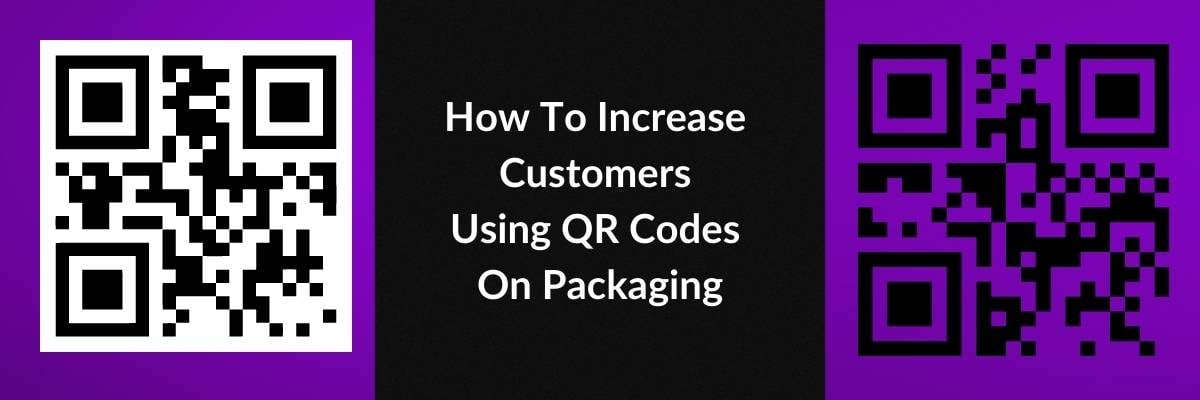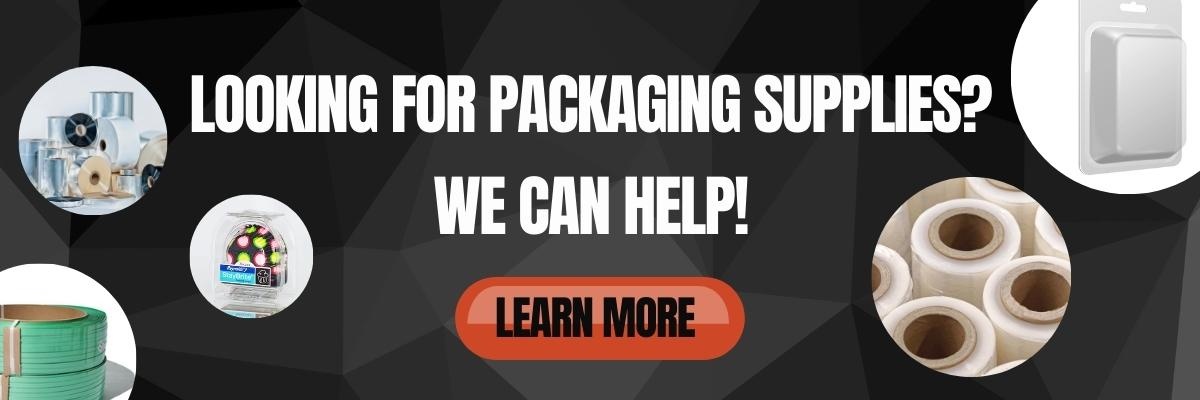How To Increase Customers Using QR Codes On Packaging
Using QR codes on packaging is an excellent opportunity to provide customers with more information than ever before. In fact, 57% of consumers have scanned a QR code on food packaging to get additional details.
So QR codes are more than just designs; they are an asset you're going to want.
In this article, we will uncover how you can leverage QR codes on packaging to maximize your marketing impact and bridge the gap between your online and offline marketing efforts.
Let's dive in.
Why Use QR Codes On Packaging?
Placing QR codes on packaging is an effective communication tool as the code scanning is fast, simple, and takes customers straight to your information.
These QR codes can be viewed using any smartphone's camera, making accessing information easy. This prevents customers from opening their laptops or computers just to view information.
Whether your objective is to,
- Get customer feedback
- Promote your social media handles
- Provide additional product information
- Or simply make it easy for customers to connect with customer support
You can add intelligent QR codes to improve the value of your ordinary packaging!
What Information Can You Add Via QR Codes On Packaging?
Besides text-based information, you can even share multimedia content as well. Here is some info you can share via smart QR codes.
- Button link to your website or video
- Document files like a user manual, product information, e-book, or report
- Map location of your business
- Customized forms for getting consumer feedback, running surveys, registering for an event, and correction processes
- Share a collection of your entire product range
- Deals and discounts
- Business cards
Looking for packaging supplies? We can help!
How Can QR Codes Be Used On Different Types Of Product Packaging?
Let's see how the major packaging products are segregated and how QR Codes are relevant to each of them.
Primary Product Packaging
Primary packaging usually holds the actual product. Primary containers can be made of cardboard, paper, plastic, metal, glass, and other types of materials.
Information such as expiration dates, manufacturer details, ingredients, warnings, and nutritional facts are published on the labels of these containers. All this information needs to be visually appealing and made recognizable to the consumer.
Here you can even add a social media QR code, a website QR code, or a product video QR code to pique the interest of consumers.
Secondary Product Packaging
Secondary packaging carries the products indirectly. For example, they can be a medicine box or a cosmetic box. However, even they should have information such as the ingredients list and expiration date.
Here you can add a dynamic QR code (edited in real-time) and embed information, such as a how-to video, so that customers can use the product appropriately.
Tertiary Product Packaging
This type of packaging is usually the packaging (boxes and cartons) in which the product is delivered. Even though this type of packaging is mainly used for transporting the product, you can still use it for brand marketing.
You can use a product QR code to introduce your brand, share company guidelines, and educate them about your return/refund policy.
Real-Time Examples Of Brands Using QR Codes On Packaging
Here are some of the brands that are redefining QR codes on products.
- Luxury brand Gabriela Hearst provides more transparency about their clothing through QR codes.
- L'Oreal created a virtual campaign allowing customers to scan QR codes to find the perfect lipstick shade.
- As a part of the company's 50th birthday, Wendy's shared free food with its customers through QR codes.
- Klarna shopping app sent models on a runway holding QR code boards to introduce their fashion line.
Marketing Benefits Of Integrating QR Codes On Packaging
QR codes are one of the most cost-effective methods of connecting deeper with your target audience. Here are some of the marketing benefits you can reap by integrating QR codes on packaging.
- Helps you stand out - As a business, you would aim to differentiate yourself from the sea of competition. QR codes can provide you with an edge. Printing QR codes on your packaging will spike curiosity and invite prospects to interact with your brand.
- Quick access to your business - Adding QR codes prevents users from searching details such as your website, email, phone number, or social media profile online separately. Instead, you direct them to the information they need and reduce their online search time.
- Target customers on the go - When your package travels to and from its destination, customers can connect with your brand whenever they encounter it – creating an immediate opportunity to interact with your audience.
- Boosts engagement - Sharing interactive content such as audio, video, contests, and feedback requests will increase customer engagement with your brand.
- Campaign tracking - When you run campaigns to promote awareness and networking, QR codes allow you to track data. It'll provide valuable data such as customer profiles, behavior, and preferences so you can optimize your strategy accordingly.
- Allows real-time updates - Whether you need to make changes in your business hours, sales terms, offers, or other business information, dynamic QR codes will allow you to edit information instantly so users can access the updated information.
5 Ways To Leverage QR Codes On Packaging To Boost Customer Engagement
Product Transparency
80% of shoppers want brands to be transparent and cite information such as allergen reactions, certification, labor practices, and fair trade. But the average surface area of products is small; for example, a soda can has 35 square inches. This provides little room to share the whole brand story.
So, you can add QR codes to educate your customers about ingredients, how they're sourced, and how your product is helpful.
Another use of QR codes is to teach customers how to use your product. For example, if you sell cupcake mixes or items like almonds, you can link your QR code with an exciting recipe.
Product validation
Counterfeiting is a real problem nowadays, and it's not going away. In fact, 69% of UK consumers got counterfeit products online, thinking they were genuine.
To bypass this issue, you can use the QR code technology to inform customers that they are buying the 'real' brand. You can also use serial QR codes for each packaging. This way, you can communicate with the batch and branch of that particular product.
Make Engagement Fun
You can take customer engagement to the next level by gamifying the experience. For example, QR codes can be used to share spin-to-win rewards, referrals, or even brand partner opportunities.
For instance, the sunscreen brand Vacation used QR codes to connect customers to Poolsuite FM to provide them with a fully-immersive, leisure-enhancing experience during beach trips.
Data Tracking
Generally, the process of getting discounts in stores can be tedious and involves a long chain of communication. With QR codes, you can point customers to your website so they can know the latest promos and seasonal deals.
Unlike the other modes of promotion, by using QR codes, you get valuable insights into customer behavior. For example, are the QR codes scanned more in the New York or Chicago branches?
Do people prefer to re-order through your site or other modes? Should you upsell product A or product B? Such data can be analyzed to realize your ultimate marketing goal of repurchasing.
Deliver Critical Information
Product recalls are a serious issue. In such cases, you can pass on critical information to your customers using custom QR codes. You can identify the batch with problems through these codes, collect the QR codes corresponding to that batch, and inform customers about the compromised products.
This way, you can reduce potential financial and legal damage while boosting customer confidence through timely and transparent communication.
Best Practices To Follow When Using QR Codes On Packaging
Product QR codes come in various design options to grab the audience's attention. Here are some tips you need to keep in mind while structuring your design.
- Add instructions: Write a short explanation of what the customer would gain by scanning the QR code,
- Frame it: Create customizable frames to blend the QR code with your product packaging design.
- Add a logo: Include a logo at the center of your QR code to improve your branding experience .
- Save the designs: Make sure you save all the QR codes you create so you can reuse the templates for your marketing endeavors.
- Test before printing: Do field testing with smartphones and apps to know if any user can scan your QR code.
A Final Thought On QR Codes On Packaging
In this customer-centric marketing landscape, QR codes are no longer a trend you need to watch in 2023 but rather a necessity. They are an effective customer engagement tool that is easy to set up with multiple use cases and benefits.
Many businesses, including global brands, have embraced product QR codes to improve their marketing strategies. QR codes may be the right addition to your marketing and sales strategy.




